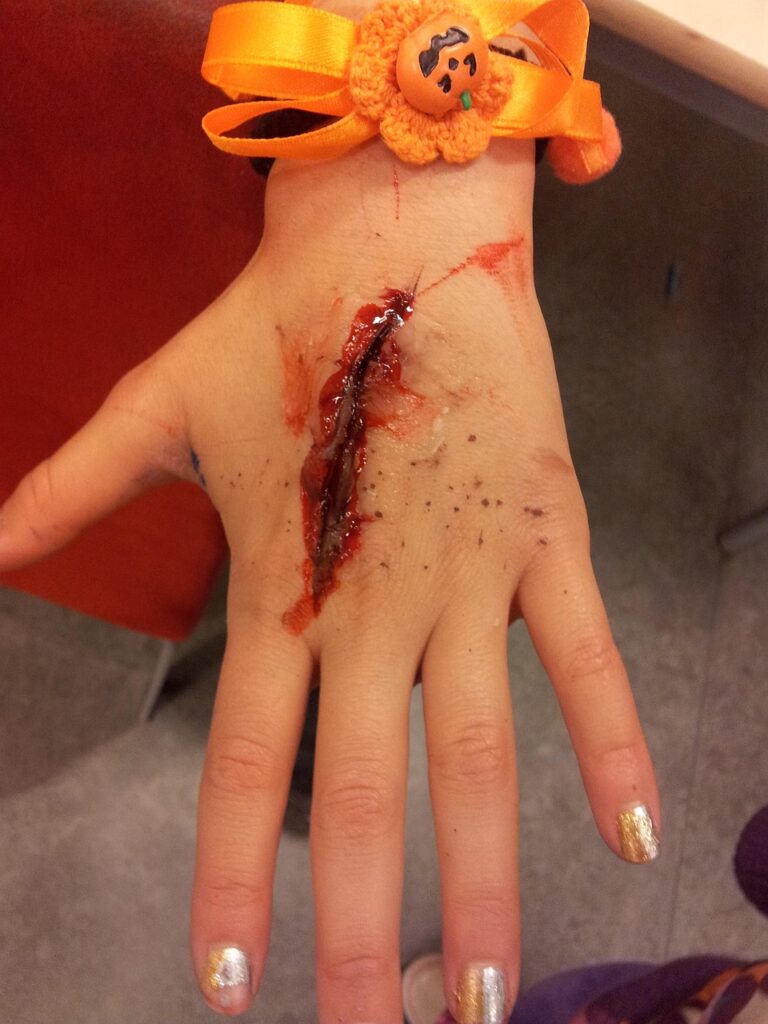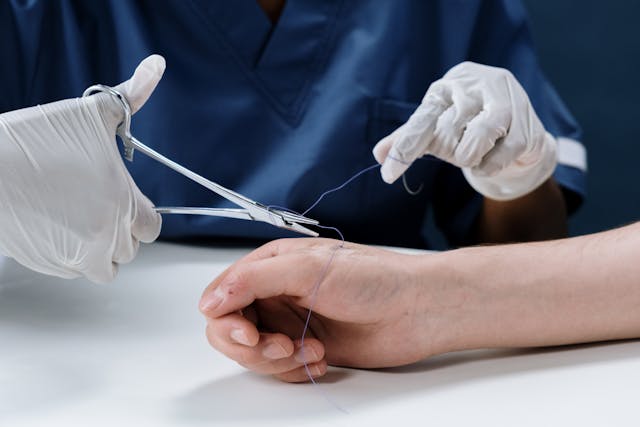When we think about improving our health, we usually picture sweeping lifestyle overhauls: strict diets, intense workout plans, dramatic routines. But the truth is, most meaningful change happens quietly—in the margins of your day, not in the spotlight. Tiny habits, the kind that take minutes or even seconds, can shift your health more powerfully than grand, short-lived efforts. These small steps slip easily into your routine, build momentum, and eventually create changes that feel natural rather than forced. Health doesn’t have to be dramatic to be transformative.
Micro-Movements That Add Up
You don’t need an hour at the gym to start feeling stronger and more energized. Micro-movements—stretching your back, taking the stairs, doing a few squats while your coffee brews—create a thread of activity throughout your day. These small bursts of movement keep your body engaged and counteract the hours you spend sitting. What begins as a quick stretch becomes a pattern of choosing activity over inactivity, and those choices compound into better mobility, more energy, and a body that feels more alive.
Tiny Mindfulness Moments
Mindfulness doesn’t require a 20-minute meditation session or a silent retreat. A few seconds of intentional breathing, a moment spent looking away from your screen, or a brief pause before responding to someone can lower stress more than you expect. These small, mindful pauses interrupt the rush of the day and give your brain a chance to regroup. The more you practice these tiny moments, the calmer and more grounded you become—even on busy days when meditation feels impossible.
Hydration as a Simple Reset

Drinking water seems too basic to matter, yet hydration quietly influences everything from your energy to your focus to your digestion. Instead of trying to chug a gallon a day, start with simple cues—a glass first thing in the morning, one when you sit down to work, another with lunch. These small, predictable moments ensure your body gets what it needs without feeling like a chore. Over time, hydration becomes an automatic reset that keeps your whole system running smoothly.
Quick Food Swaps That Build Better Eating Habits
Small nutritional changes often have more staying power than strict diets. Swapping sugary drinks for water a few times a week, adding a vegetable to one meal a day, or choosing a slightly healthier snack option can shift your relationship with food without overwhelming you. Tiny habits like prepping fruit the night before or keeping nuts in your bag create convenience in the right direction. Over time, these choices reshape your eating patterns and make healthier decisions feel effortless.
Sleep Improvements That Start With Minutes
Improving your sleep doesn’t require a complicated nighttime ritual. It can start with something as simple as dimming the lights earlier, shutting down screens 10 minutes sooner, or keeping a consistent bedtime most days of the week. These micro-adjustments help train your brain to wind down gradually instead of abruptly. The cumulative effect is deeper rest, easier mornings, and a rhythm your body can rely on. Better sleep rarely begins with a major overhaul—it starts with one tiny step.
When it comes to health, the margins matter more than you think. Tiny habits slip into your life almost unnoticed, yet they build powerful momentum. These small actions—micro-movements, mindful pauses, simple hydration, gentle food upgrades, and modest sleep improvements—don’t demand dramatic changes or perfect discipline. Instead, they work quietly and consistently, shaping your well-being from the inside out. When you focus on the margins, you discover that the path to a healthier life doesn’t require perfection—just a series of tiny steps taken with intention.…








 Kimchi is filled with lactic acid bacteria, which can help improve your digestion. This is due to the fermentation process that it goes through during preparation. As a result, kimchi can keep your digestive system healthy and regular. It’s even been found to reduce the symptoms of irritable bowel syndrome (IBS). Additionally, kimchi is a good source of dietary fiber, which is good for digestion. Not only that, but the probiotics in kimchi can also reduce inflammation and help your body absorb other nutrients more easily.
Kimchi is filled with lactic acid bacteria, which can help improve your digestion. This is due to the fermentation process that it goes through during preparation. As a result, kimchi can keep your digestive system healthy and regular. It’s even been found to reduce the symptoms of irritable bowel syndrome (IBS). Additionally, kimchi is a good source of dietary fiber, which is good for digestion. Not only that, but the probiotics in kimchi can also reduce inflammation and help your body absorb other nutrients more easily. You might never think that kimchi has anti-aging effects, but it does. This is because of a compound found in kimchi called S-allylcysteine. This compound can help reduce inflammation and oxidative stress, which are both factors that can contribute to the aging process. It may also protect against age-related diseases such as diabetes and Alzheimer’s disease. On top of that, kimchi also contains antioxidants, which can help protect your skin from the damaging effects of free radicals.
You might never think that kimchi has anti-aging effects, but it does. This is because of a compound found in kimchi called S-allylcysteine. This compound can help reduce inflammation and oxidative stress, which are both factors that can contribute to the aging process. It may also protect against age-related diseases such as diabetes and Alzheimer’s disease. On top of that, kimchi also contains antioxidants, which can help protect your skin from the damaging effects of free radicals. The first cause of
The first cause of  The third cause of tooth decay is smoking. Smoking cigarettes or other tobacco products can increase the amount of plaque in your mouth and stain your teeth. Not only that, but it can also make it harder for wounds to heal properly, making it difficult for cavities or gum disease to be treated. If you are a smoker, consider quitting in order to protect your teeth and gums.
The third cause of tooth decay is smoking. Smoking cigarettes or other tobacco products can increase the amount of plaque in your mouth and stain your teeth. Not only that, but it can also make it harder for wounds to heal properly, making it difficult for cavities or gum disease to be treated. If you are a smoker, consider quitting in order to protect your teeth and gums.
 Anxiety is a condition that affects millions of people all over the world. CBD is effective in treating anxiety and can even help to reduce symptoms of anxiety disorders. CBD works by interacting with the body’s endocannabinoid system, which regulates mood and anxiety. When CBD is taken, it can help restore balance to the endocannabinoid system, which can help reduce anxiety symptoms. Anxiety has many treatments, but CBD is a safe and effective option that can help relieve symptoms.
Anxiety is a condition that affects millions of people all over the world. CBD is effective in treating anxiety and can even help to reduce symptoms of anxiety disorders. CBD works by interacting with the body’s endocannabinoid system, which regulates mood and anxiety. When CBD is taken, it can help restore balance to the endocannabinoid system, which can help reduce anxiety symptoms. Anxiety has many treatments, but CBD is a safe and effective option that can help relieve symptoms.

 One of the main benefits of weight loss supplements is that they can help to enhance your metabolic rate. It is the process by which your body burns calories. When your metabolic rate increases, you will burn more calories throughout the day. This can lead to weight loss over time. There are a variety of different supplements that can help to increase your metabolic rate. Some of the most popular ones include caffeine and green tea extract. If you are looking for a weight loss supplement that can help to boost your metabolism, these are two good options to consider.
One of the main benefits of weight loss supplements is that they can help to enhance your metabolic rate. It is the process by which your body burns calories. When your metabolic rate increases, you will burn more calories throughout the day. This can lead to weight loss over time. There are a variety of different supplements that can help to increase your metabolic rate. Some of the most popular ones include caffeine and green tea extract. If you are looking for a weight loss supplement that can help to boost your metabolism, these are two good options to consider. Another benefit of weight loss supplements is that they can help to reduce your food cravings. This is important because it can help you eat less throughout the day. It works through a variety of different mechanisms. For example, some supplements can help increase the levels of satiety hormones in your body. It can help you feel fuller for longer and reduce the number of times you feel the need to eat throughout the day. When you have fewer food cravings, you will be less likely to overeat. This can lead to weight loss over time.
Another benefit of weight loss supplements is that they can help to reduce your food cravings. This is important because it can help you eat less throughout the day. It works through a variety of different mechanisms. For example, some supplements can help increase the levels of satiety hormones in your body. It can help you feel fuller for longer and reduce the number of times you feel the need to eat throughout the day. When you have fewer food cravings, you will be less likely to overeat. This can lead to weight loss over time. One of the main benefits of making your yogurt is that it’s much cheaper than buying it from the store. A gallon of milk costs about $0.50, and you can make a whole batch of yogurt with it.
One of the main benefits of making your yogurt is that it’s much cheaper than buying it from the store. A gallon of milk costs about $0.50, and you can make a whole batch of yogurt with it. Making large batches of yogurt is a great way to save time and money. Once you’ve made a batch, portion out the yogurt into individual containers and freeze for later.
Making large batches of yogurt is a great way to save time and money. Once you’ve made a batch, portion out the yogurt into individual containers and freeze for later.
 If you haven’t already heard,
If you haven’t already heard,  Also referred to as Full Spectrum, hemp extract refers to a product made using multiple cannabinoids, not just CBD but other active cannabinoids such as CBG, CBN, CBC, Terpenes, Flavonoids and so on. Full-spectrum includes all active ingredients of the hemp plant rather than isolating CBD or a single strain of cannabinoid.
Also referred to as Full Spectrum, hemp extract refers to a product made using multiple cannabinoids, not just CBD but other active cannabinoids such as CBG, CBN, CBC, Terpenes, Flavonoids and so on. Full-spectrum includes all active ingredients of the hemp plant rather than isolating CBD or a single strain of cannabinoid. Buying CBD oil doesn’t have to be that complicated. If you are wondering where to buy CBD in stores, you can start by checking online. Look for well-known brands that have a good reputation among consumers who have purchased and used their products. These reputable companies take their business very seriously and go out of their way to ensure the highest standards in developing, growing, processing, and harvesting organic hemp plants.…
Buying CBD oil doesn’t have to be that complicated. If you are wondering where to buy CBD in stores, you can start by checking online. Look for well-known brands that have a good reputation among consumers who have purchased and used their products. These reputable companies take their business very seriously and go out of their way to ensure the highest standards in developing, growing, processing, and harvesting organic hemp plants.…
 Before using a fat burner, it is essential to seek advice from your doctor about the best one to use. Consider talking with your doctor to know if the weight loss product you are purchasing has side effects on long-term usage. Professional doctors and nutritional specialists will determine the product’s safety and recommend the suitable one for people with health conditions. Discussing your medical history and your current health state will help the doctor to assess you and advise on the right fat burner to use for the best outcome.
Before using a fat burner, it is essential to seek advice from your doctor about the best one to use. Consider talking with your doctor to know if the weight loss product you are purchasing has side effects on long-term usage. Professional doctors and nutritional specialists will determine the product’s safety and recommend the suitable one for people with health conditions. Discussing your medical history and your current health state will help the doctor to assess you and advise on the right fat burner to use for the best outcome. It is essential to consume safe products to ensure that you do not keep your body under health risks. Nobody would want to end up in a hospital for health complications due to unsafe weight loss products. Therefore, it is essential to ensure that the fat burner you are using is safe before making your final decision to purchase it. Consider researching the weight loss products available and ask questions on platforms such as Quora to gather enough information on product safety before using it.
It is essential to consume safe products to ensure that you do not keep your body under health risks. Nobody would want to end up in a hospital for health complications due to unsafe weight loss products. Therefore, it is essential to ensure that the fat burner you are using is safe before making your final decision to purchase it. Consider researching the weight loss products available and ask questions on platforms such as Quora to gather enough information on product safety before using it.





 You should not only be prepared financially when you reach your senior years. You should also be ready physically and mentally. Start losing all those fats now. You will surely have a hard time with them when you get older. Besides limited physical capacity, you will be predisposed to a variety of ailments if you do not get rid of all those fats. It is only when you are healthy that you can fully enjoy your senior years.
You should not only be prepared financially when you reach your senior years. You should also be ready physically and mentally. Start losing all those fats now. You will surely have a hard time with them when you get older. Besides limited physical capacity, you will be predisposed to a variety of ailments if you do not get rid of all those fats. It is only when you are healthy that you can fully enjoy your senior years. Once you don’t feel good about yourself, your self-esteem will surely begin to drop. Your confidence may plummet further when all you see in the mirror is your double chin and your favorite clothes do not fit anymore. Indeed, it is never fashionable to be fat and overweight. When you cannot do some things with ease and people around you may now start treating you differently because of your bulging appearance, your feeling of self-worth can hit rock bottom.
Once you don’t feel good about yourself, your self-esteem will surely begin to drop. Your confidence may plummet further when all you see in the mirror is your double chin and your favorite clothes do not fit anymore. Indeed, it is never fashionable to be fat and overweight. When you cannot do some things with ease and people around you may now start treating you differently because of your bulging appearance, your feeling of self-worth can hit rock bottom.

 Pain
Pain

 to consider when planning to buy
to consider when planning to buy 
 The first thing you should consider when shopping for weight loose
The first thing you should consider when shopping for weight loose  The decision you make when choosing a supplement to purchase should not be taken lightly. Since you will most likely spend a significant amount of cash buying a weight loss supplement, you should get great results. Many manufactures selling weight loss products are not genuine, and it is no surprise if many people have bought counterfeit products.
The decision you make when choosing a supplement to purchase should not be taken lightly. Since you will most likely spend a significant amount of cash buying a weight loss supplement, you should get great results. Many manufactures selling weight loss products are not genuine, and it is no surprise if many people have bought counterfeit products. Hiring a family dentist will help you save more money and time. When you hire a family dentist, this means you can save a lot of money on your medical expenses. Once you hire these dentists, you will schedule different dates when visiting your dentist, which will help you have strong and healthy teeth. In other words, when you are working with these experts, you will be guided accordingly, and you will not encounter dental-related problems.
Hiring a family dentist will help you save more money and time. When you hire a family dentist, this means you can save a lot of money on your medical expenses. Once you hire these dentists, you will schedule different dates when visiting your dentist, which will help you have strong and healthy teeth. In other words, when you are working with these experts, you will be guided accordingly, and you will not encounter dental-related problems. When you hire a reputed dentist, you will get an opportunity to get quality oral care. Most of the experienced dentists you will find have the right skills and knowledge that will help you to know how to maintain your oral health. In other words, it is advisable to understand that a professional and reliable dentist will ensure that nothing is wrong when it comes to your oral health. That is why you are guaranteed to receive quality oral care.
When you hire a reputed dentist, you will get an opportunity to get quality oral care. Most of the experienced dentists you will find have the right skills and knowledge that will help you to know how to maintain your oral health. In other words, it is advisable to understand that a professional and reliable dentist will ensure that nothing is wrong when it comes to your oral health. That is why you are guaranteed to receive quality oral care.


 There are different types of squat exercises you can do. The idea, in this case, is to lower your bum down with legs shoulder-width apart until the thighs are parallel with the ground. Try to balance here for a few seconds before pushing up. It is advisable to try doing squats with the exercise ball. You can place the ball against the wall with the lower back firmly pressed against the ball. Other than the ball increasing the intensity of the squat, this will also offer you a nice back rub.
There are different types of squat exercises you can do. The idea, in this case, is to lower your bum down with legs shoulder-width apart until the thighs are parallel with the ground. Try to balance here for a few seconds before pushing up. It is advisable to try doing squats with the exercise ball. You can place the ball against the wall with the lower back firmly pressed against the ball. Other than the ball increasing the intensity of the squat, this will also offer you a nice back rub. You should avoid energy drinks, sodas, and concentrated juices. This is because these drinks contain a lot of sugar and empty calories. Such calories can negatively impact your workout efforts. You can also drink green tea as it contains a lot of antioxidants and negligible calories. The green tea contains ten times more polyphenols as compared to most vegetables.
You should avoid energy drinks, sodas, and concentrated juices. This is because these drinks contain a lot of sugar and empty calories. Such calories can negatively impact your workout efforts. You can also drink green tea as it contains a lot of antioxidants and negligible calories. The green tea contains ten times more polyphenols as compared to most vegetables. This is accomplished by combining cleanse days and shake days. During shake days, you will replace your lunch and breakfast with Isagenix shakes and a wide range of supplements. Also, you will prepare dinner that features lean proteins, vegetables, and fruits. Also, you will add a small amount of fats from the healthy oils. During cleanse days, you will consume several shots of Isagenix liquid and a few tablets.
This is accomplished by combining cleanse days and shake days. During shake days, you will replace your lunch and breakfast with Isagenix shakes and a wide range of supplements. Also, you will prepare dinner that features lean proteins, vegetables, and fruits. Also, you will add a small amount of fats from the healthy oils. During cleanse days, you will consume several shots of Isagenix liquid and a few tablets. The truth is that the use of meal replacement shakes is an innovative strategy that has been used for many years in helping people lose weight. The Isagenix system helps promote fasting and reduce your appetite. If your current diet contains a wide range of energy drinks and fast food, then switching to
The truth is that the use of meal replacement shakes is an innovative strategy that has been used for many years in helping people lose weight. The Isagenix system helps promote fasting and reduce your appetite. If your current diet contains a wide range of energy drinks and fast food, then switching to  Boxing hand wraps are quite important in keeping the skin on knuckles from being cut and can prevent wrist sprains and bone fractures. The right way for doing so is by learning how to wrap hands. This provides a lot of protection for the bones such as knuckles. You should start by looping it around the cover and thumb.
Boxing hand wraps are quite important in keeping the skin on knuckles from being cut and can prevent wrist sprains and bone fractures. The right way for doing so is by learning how to wrap hands. This provides a lot of protection for the bones such as knuckles. You should start by looping it around the cover and thumb. You can find different punching bags on the market, but the common one is the heavy bag. Usually, it is made of leather, canvas, or leather. You can find mounts to attach them to the ceiling, floor, and free-standing apparatus. A lot of people find the heavy bag made of vinyl the most comfortable. However, if you want something durable, then you should consider the canvas bag.
You can find different punching bags on the market, but the common one is the heavy bag. Usually, it is made of leather, canvas, or leather. You can find mounts to attach them to the ceiling, floor, and free-standing apparatus. A lot of people find the heavy bag made of vinyl the most comfortable. However, if you want something durable, then you should consider the canvas bag.


 Bodyweight exercise forces you to utilize all muscles in the body. For instance, when you pose in a plank position, your core, legs, arms, and back muscles are all working in sync to resist your weight against the gravity. If you manage to do it for five minutes, you are already in your prime condition.
Bodyweight exercise forces you to utilize all muscles in the body. For instance, when you pose in a plank position, your core, legs, arms, and back muscles are all working in sync to resist your weight against the gravity. If you manage to do it for five minutes, you are already in your prime condition.
 This is one of the primary reasons why most people like using vinegar. It is essential to understand that Vinegar increases the level of acidity in your stomach. This, therefore, allows it to digest the food that you have already eaten and it will also help to propel it into your small intestine. Also, if you face slow digestion, then Vinegar is one of the best options you are recommended to consider.
This is one of the primary reasons why most people like using vinegar. It is essential to understand that Vinegar increases the level of acidity in your stomach. This, therefore, allows it to digest the food that you have already eaten and it will also help to propel it into your small intestine. Also, if you face slow digestion, then Vinegar is one of the best options you are recommended to consider. It is essential to understand that extreme stress and exercise can cause lactic acid to build up in a human body. This will later cause fatigue. That is why you need to look for apple cider vinegar because it has amino acids that will act as an antidote. Also, it contains enzymes and potassium that will help you when you feel more tired. The next time you feel you are tired, you can add a tablespoon of vinegar to a glass of water to boost your energy.…
It is essential to understand that extreme stress and exercise can cause lactic acid to build up in a human body. This will later cause fatigue. That is why you need to look for apple cider vinegar because it has amino acids that will act as an antidote. Also, it contains enzymes and potassium that will help you when you feel more tired. The next time you feel you are tired, you can add a tablespoon of vinegar to a glass of water to boost your energy.… The first and main reason why you should definitely drink green juice and put it into your daily routine is that it is fully packed with all sorts of beneficial nutrients for your body. Green juices are usually made of a mix of different fruits and vegetables. They can also contain a wide array of various adaptogens, herbs, and algae.
The first and main reason why you should definitely drink green juice and put it into your daily routine is that it is fully packed with all sorts of beneficial nutrients for your body. Green juices are usually made of a mix of different fruits and vegetables. They can also contain a wide array of various adaptogens, herbs, and algae. Green juices also help to improve your health in a lot of different ways. There is a wide array of several different health benefits that you can receive if you drink green juice on a routine basis. The health benefits of green juice include balancing your hormones, improve mental clarity, promote digestion and gut health, boost your immune system, balance body pH levels, as well as detox your body.…
Green juices also help to improve your health in a lot of different ways. There is a wide array of several different health benefits that you can receive if you drink green juice on a routine basis. The health benefits of green juice include balancing your hormones, improve mental clarity, promote digestion and gut health, boost your immune system, balance body pH levels, as well as detox your body.…

 It is a good idea to find a dentist whom you are comfortable with. You should start by asking your family, colleagues, or friends. The pharmacist, dental labs, and family doctor are important resources for finding professional dentists. Even though some of the testimonials you find online are good, it is good if you can contact some patients about their experience. In this way, you can have an idea of what to expect during and after treatment. A good dentist can provide you with a list of past and current clients and their contact details.
It is a good idea to find a dentist whom you are comfortable with. You should start by asking your family, colleagues, or friends. The pharmacist, dental labs, and family doctor are important resources for finding professional dentists. Even though some of the testimonials you find online are good, it is good if you can contact some patients about their experience. In this way, you can have an idea of what to expect during and after treatment. A good dentist can provide you with a list of past and current clients and their contact details. It is a good idea to choose a dentist who is near your residence or place of work. Also, find out whether their hours of operation do match yours. Check whether you can arrange for last-minute appointment and emergencies. You should choose a Guelph dentist who is responsive. This means that he or she should respond to your messages and at the same time offer a sense of comfort. Check whether they are open on Saturdays and Sundays.
It is a good idea to choose a dentist who is near your residence or place of work. Also, find out whether their hours of operation do match yours. Check whether you can arrange for last-minute appointment and emergencies. You should choose a Guelph dentist who is responsive. This means that he or she should respond to your messages and at the same time offer a sense of comfort. Check whether they are open on Saturdays and Sundays.
 One of the things that you should consider is the volume of the oil. The CBD oils have various volumes and it is advisable to check the volume before making the purchase. It is necessary that you know the right amount of CBD for your body.
One of the things that you should consider is the volume of the oil. The CBD oils have various volumes and it is advisable to check the volume before making the purchase. It is necessary that you know the right amount of CBD for your body. The budget is an important consideration when purchasing
The budget is an important consideration when purchasing 
 Since there are many
Since there are many  When searching for the ideal dental clinic, it is highly recommended that you limit your search to the locality that you belong. This will help you get immediate medical attention in situations where you need emergency dental services. If you are in Milton Keynes, the
When searching for the ideal dental clinic, it is highly recommended that you limit your search to the locality that you belong. This will help you get immediate medical attention in situations where you need emergency dental services. If you are in Milton Keynes, the 
 One of the most complex parts of the human body is the brain. Though it takes a small part of your body, it is the most important part, since it controls all the functions in your body. These include physiological and thought processes. Drugs and alcohol have a great effect on the brain since it interferes with the chemicals that make your brain work well.
One of the most complex parts of the human body is the brain. Though it takes a small part of your body, it is the most important part, since it controls all the functions in your body. These include physiological and thought processes. Drugs and alcohol have a great effect on the brain since it interferes with the chemicals that make your brain work well. This is another major effect that drugs and substances have on your health. Your immune system ensures that you do not get diseases easily since it protects you. By becoming addicted and abusing the substances your body’s immune system is greatly affected, and you become exposed to various infections. Further, these substances largely affect your cardiovascular system. This happens when your heart is affected due to abnormal heart rates. This can easily lead to heart attack. The drugs that are injected into your body sometimes leads to collapsing of blood vessels as well as veins.
This is another major effect that drugs and substances have on your health. Your immune system ensures that you do not get diseases easily since it protects you. By becoming addicted and abusing the substances your body’s immune system is greatly affected, and you become exposed to various infections. Further, these substances largely affect your cardiovascular system. This happens when your heart is affected due to abnormal heart rates. This can easily lead to heart attack. The drugs that are injected into your body sometimes leads to collapsing of blood vessels as well as veins.
 This is one of the main ways that can assist you in maintaining healthy skin. Smoking greatly affects your skin health as well as texture making it have wrinkles and look older. This is because, when you smoke, the small vessels in the outer layer of your skin are narrowed, and this reduces the blood flow. This leads to a reduction of oxygen and other essential nutrients that should be flowing to your skin. Further, smoking leads to the damage of elastin and collagen which gives your skin elasticity and strength.
This is one of the main ways that can assist you in maintaining healthy skin. Smoking greatly affects your skin health as well as texture making it have wrinkles and look older. This is because, when you smoke, the small vessels in the outer layer of your skin are narrowed, and this reduces the blood flow. This leads to a reduction of oxygen and other essential nutrients that should be flowing to your skin. Further, smoking leads to the damage of elastin and collagen which gives your skin elasticity and strength.